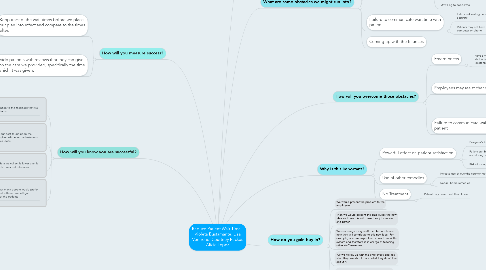
1. How will you measure success?
1.1. Keep track of the wait times before we place our plan into effect and compare to the times after.
1.2. Provide patients with reviews that they can give us on the care we provided, specifically the time in which it was given.
1.2.1. We will provide a survey with a scale form one to ten, highly dissatisfied to highly satisfied.
1.2.2. We will ask what the patients wait time was, if they thought it was acceptable, if they were informed accurately on how long the wait would be from the beginning, whether they felt the amount of time the care provider spent with them was appropriate, their overall satisfaction, their likelihood of suggesting us to others etc.
1.2.3. We will then provide a comments box for anything extra they may have to say.
2. How will you know you are successful?
2.1. We will pay attention to the feedback that we receive from patients.
2.2. We will then do our best to act upon the reviews that are given with minor adjustments or new innovative ideas.
2.3. If the wait time data we collect is lower than it was before our plan was put into action.
2.4. This is an issue that many people would prefer to not have to deal with and we will gain support from all of the patients
3. How will you overcome those obstacles?
3.1. Emergiences
3.1.1. Have a very detailed plan made out where the staff is well aware of what to do and where to locate the necessary tools needed.
3.2. Employees may resist change
3.2.1. A survey can be done in order to get feedback from the employees.
3.2.2. Offer training sessions for the new program and offer rewards to the employees.
3.2.3. Inform the employees how this will make their jobs easier and how this will improve patient satisfaction.
3.3. Failure to communicate wait time time with patient
3.3.1. We can try to avoid this by being organized and having backup plans in case we are behind on schedule.
3.3.2. Our key in order to satisfy the patient is to communicate the information properly and keep them up to date.
4. Why is this important?
4.1. Powerful effect on patient satisfaction
4.1.1. Everyone's time is valuable!
4.1.2. Patient can become frustrated and irritated about long waiting times=unhappy patients
4.1.3. Risk of losing patients
4.2. Use of other remedies
4.2.1. Increase use of over-the-counter medicines
4.2.2. Natural home remedies
4.3. No Treatment
4.3.1. Patient may never treat their illness
5. What are we trying to fix?
5.1. Better patient experience
5.1.1. Acceptable wait time to see doctor
5.1.2. Reduce overscheduling
5.1.3. Better communication between front desk and patient
5.1.4. Prevent patients from not treating their illness due to the wait time
6. What are some obstacles we might run into?
6.1. Emergencies
6.1.1. Sometimes emergencies happen & this is out of the control of doctors
6.2. Employees may resist change
6.2.1. Out of employees comfort zone
6.2.2. Comfortable with the way things have been run for years
6.2.3. May not want to learn new tasks/skills
6.2.4. Unwilling to cooperate
6.3. Failure to communicate wait time with patient
6.3.1. Estimated waiting time may be far from accurate
6.3.2. Patients may not have the means to a computer or phone
